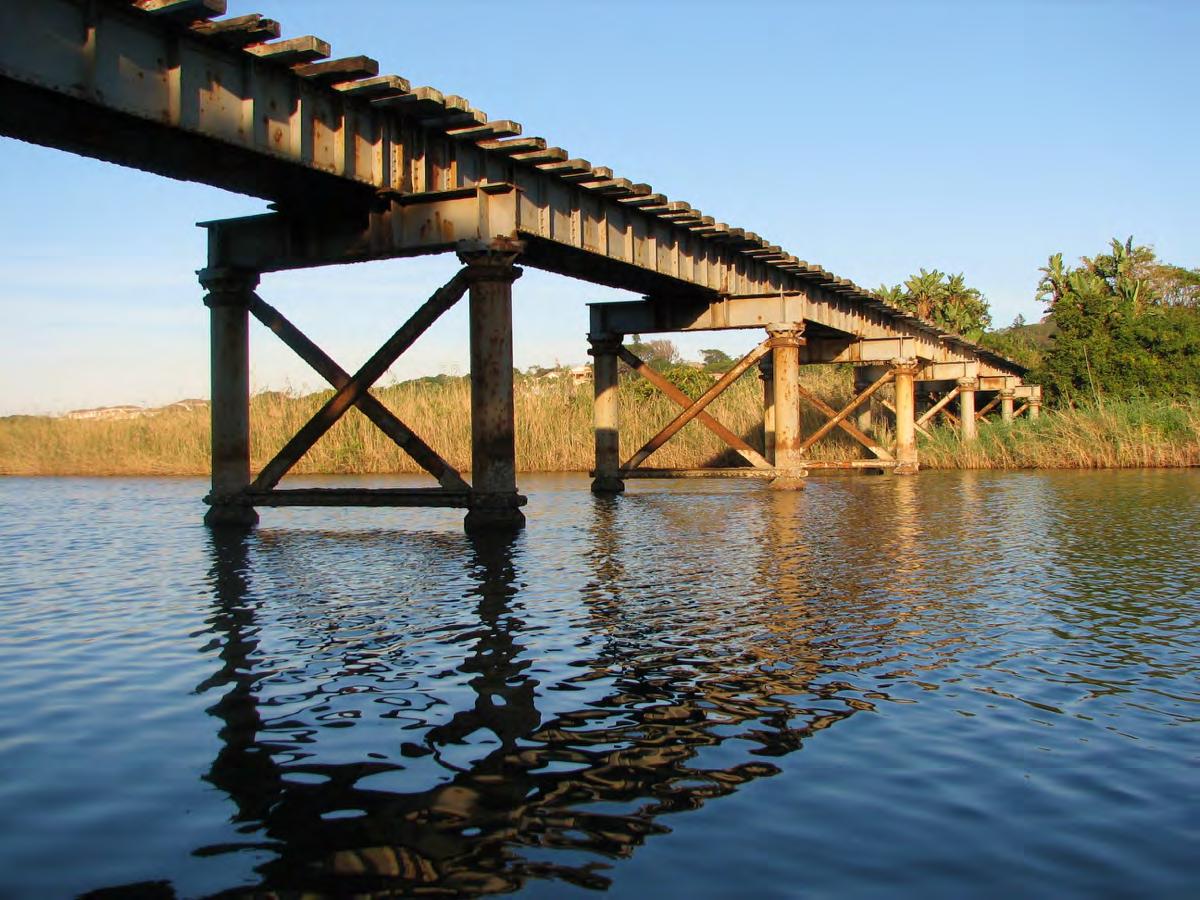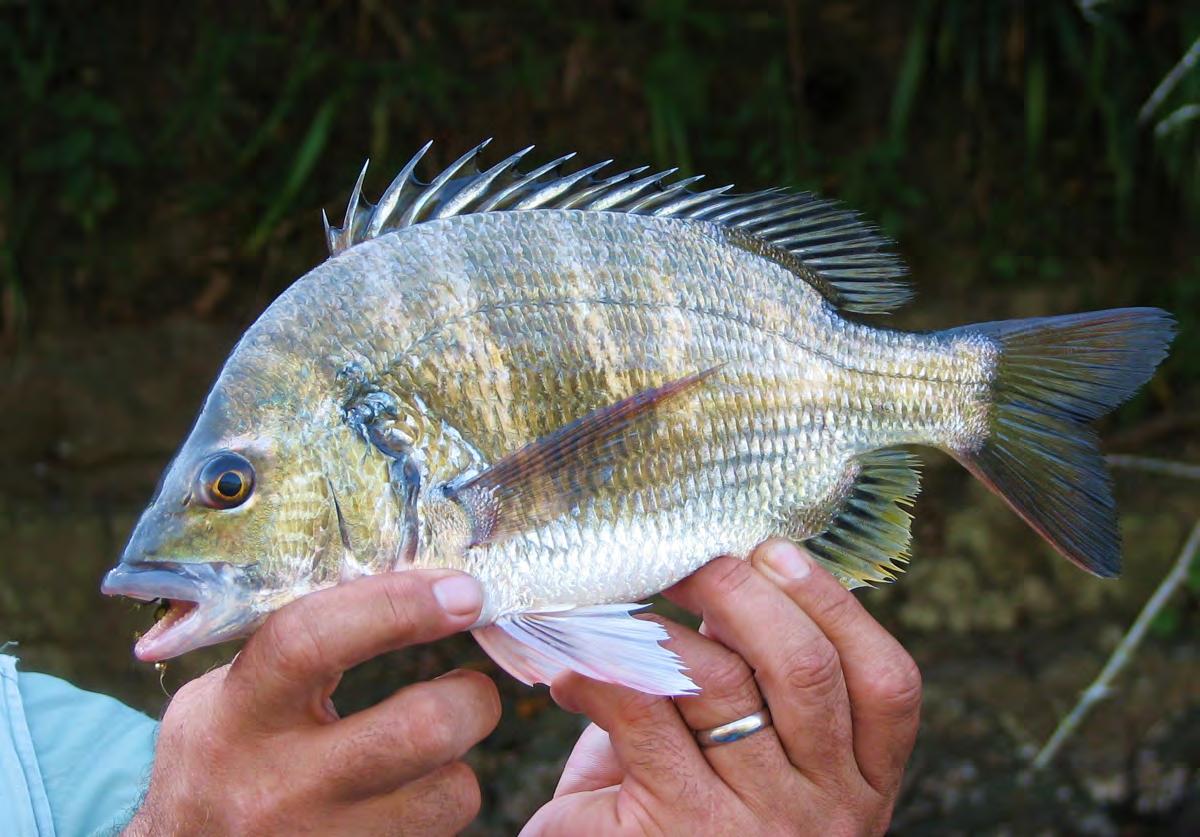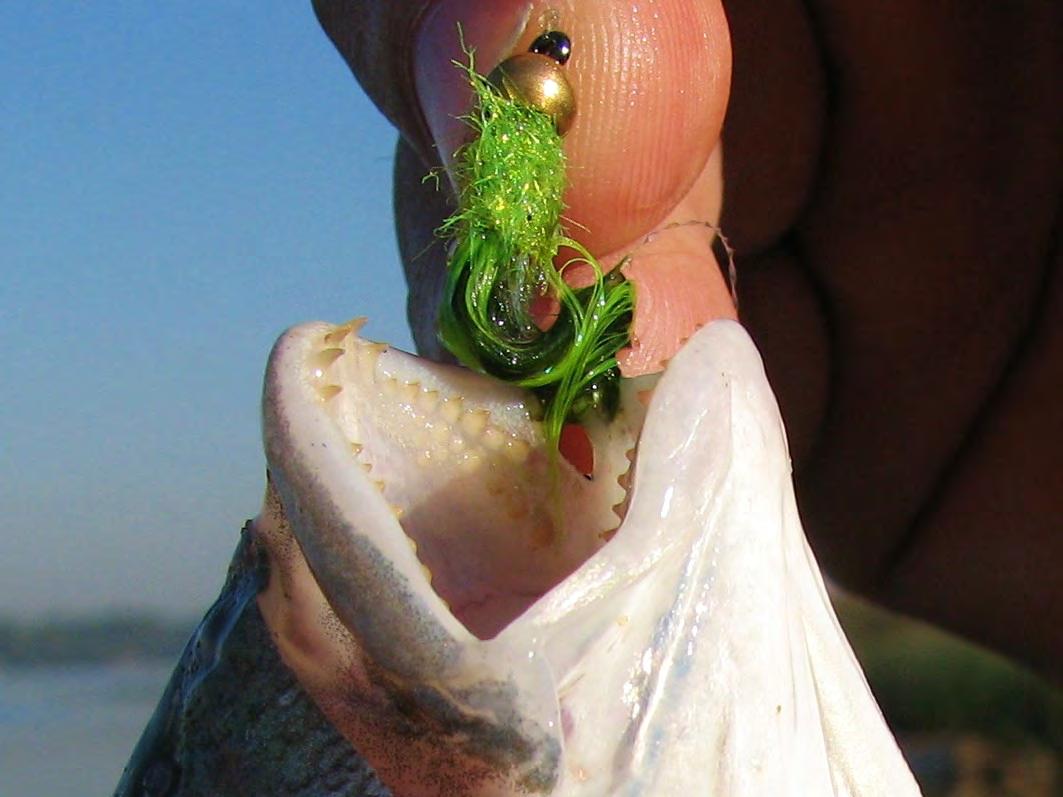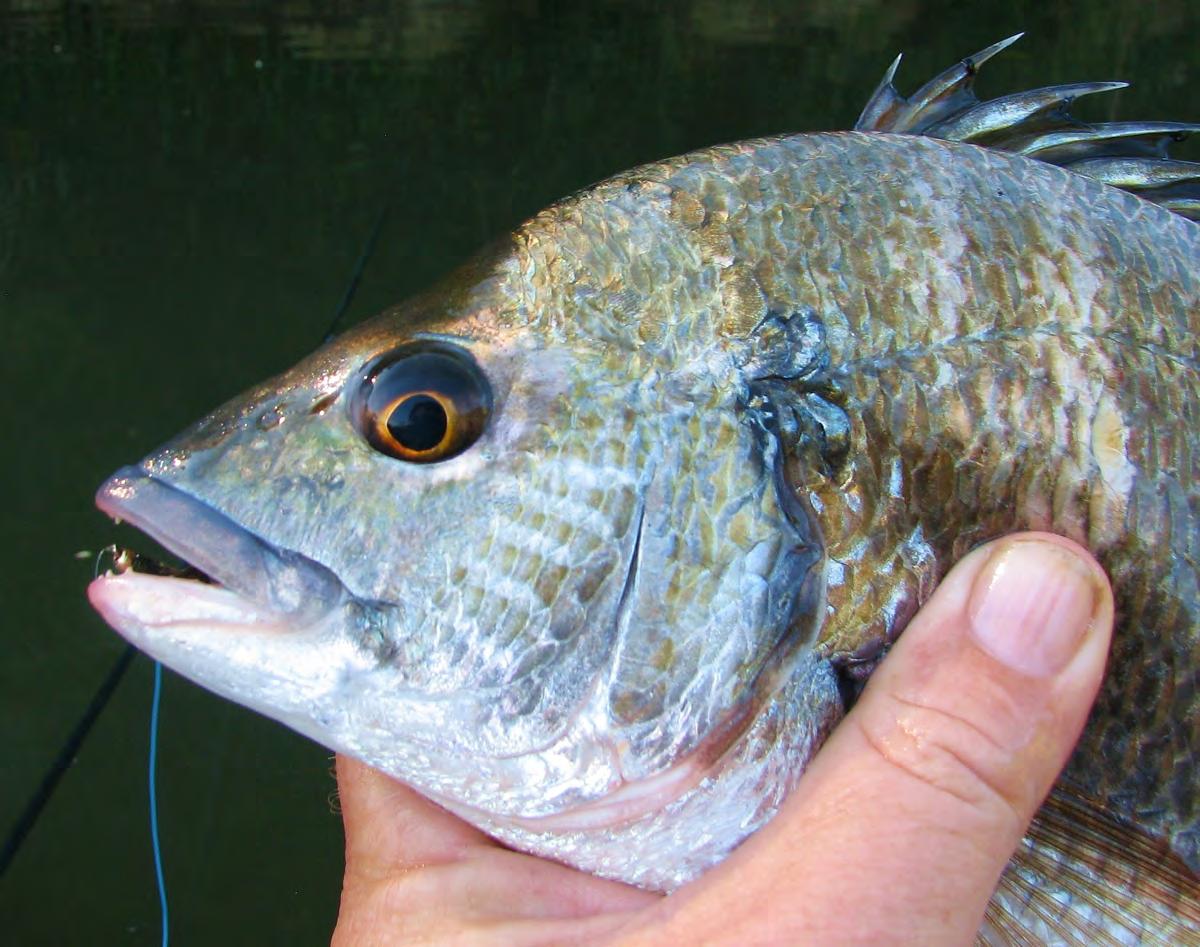
7 minute read
In Pursuit of Perch Hunting the cautious River Bream By Bruce Black
There are few things in fly fishing as enjoyable as targeting perch on light fly tackle amidst the spectacular scenery of an eastern seaboard estuary. While they are often overlooked by fly fishers after kingfish or other game species, perch are grand fly rod targets in their own right. They attain a respectable size, are relatively plentiful, and although they may occasionally slap a fly aggressively they can also display a level of caution that leaves a paranoid spotted grunter on a shallow sand bank looking suicidal and makes the consistent capture of big specimens a real challenge.
Technically known as River Bream the fish was called perch by colonial types who felt it resembled their European freshwater perch. Other common names include porridge bream because mielie pap is supposed to be good bait for them and Slim Jannie because they are very good at removing said porridge from the hook without the angler realizing that he is getting a bite. Perch are common in estuaries from East London northwards with the scenic estuaries of the Wild Coast, Zululand and Maputaland supporting large populations. The not so scenic big harbours of the east coast –Durban and Richards Bay – also hold good numbers of perch especially in their upper reaches. Estuarine species are built tough so that they can withstand rapid and extreme fluctuations in salinity and turbidity. While less degraded estuaries offer a better habitat and happier fish substantial populations can still be found in even the most damaged estuaries of the East Coast. Even close to the big cities it’s a fair bet that rivers long ago written off as dead still hold a few perch for those brave enough to risk their health fishing for them.
Advertisement
Perch don’t attain a great size, the S.A angling record is 3.2 kilos. Anglers using bait and plastics take big fish fairly regularly but most fly caught fish are on the small side with anything over a kilo being regarded as a good fish. Despite their relatively small size they are strong fighters with even juvenile fish putting up a good tussle. While they feed throughout the year they do appear to be more active in the warmer months. From a fly fishing perspective the best time to target them in the estuary is spring or autumn when the water is fairly warm but not usually too dirty from rainfall. Warm, settled weather produces the best results with sudden cold snaps causing the shallow waters of the estuary to cool rapidly and put the fish off the feed.

Perch enjoy a varied diet - there are few small estuarine life forms that they won’t eat. The normal diet consists of small fish like glassies and crustaceans such as crabs, mud prawns and swimming prawns. The small black crabs found on the banks of the warmer estuaries are particularly favoured and perch will often come into shallow water to feed on them. In addition to these run-of-the-mill food types perch will also eat grain, fruits and insects, with falls of flying ants in spring triggering hectic feeding activity in the upper reaches of some estuaries.
In the marinas of the big East Coast harbours perch have become accustomed to a diet of plate scrapings thrown overboard by yachtsmen and I know of a couple of big specimens that lurk under the keels of moored yachts waiting for handouts. Targeting these tame fish probably wouldn’t go down well with the yachties so they are best left alone.
A four or five weight outfit matched with an intermediate line is ideal for perch unless you intend to cast a popper or surface pattern in which case a floating line is required. Most of the estuarine situations where the species is targeted are shallow, so sinking lines are unnecessary and in fact are often counter productive as they drag the fly through the bottom sediment and create a disturbance that terrifies everything with fins except gurnards who quite like it.

Rod length leaders and fairly light tippets give the best results.

Perch will tackle most small fly patterns with Clouser’s, flippers, poppers, zonkers and Charlie style patterns all being successful. It’s nice to have lots and lots of salt water patterns and to gaze intelligently into your fly box while the missus admires you from the bank and possibly takes a photo but in truth all you need is a few Salty Buggers in sizes 8 and 6. This is a simply deadly pattern for estuarine work. Carry some with bead heads for deeper water and a more exaggerated diving motion and some unweighted to work slowly in shallow water.

Olive is a particularly deadly colour for perch but chartreuse, white and pink are also effective. During falls of flying ants in spring and early summer perch grab downed insects off the surface and at times like this they can be taken on small deer hair poppers or an unweighted Salty Bugger treated with floatant and given the odd twitch to suggest a struggling flying ant coming to a soggy end.
Accurate casting to structure is essential when targeting big perch during the day in the upper reaches of the estuary. Structure provides shelter for small baitfish like glassies. Look at any piece of submerged timber or structure in the estuary and you are almost guaranteed to see a worried looking shoal of glassies hanging around close to it. Perch are particularly partial to these small fish and will often take up permanent residence in the immediate vicinity so that they can pop in and grab an unhappy meal whenever peckish.

Productive structure includes bridge supports, reed beds, rocky areas, the bases of wharves and jetties, submerged timber, mangrove roots and, probably best of all, the overhanging semi submerged branches of the lagoon hibiscus. During low light conditions and in the lower reaches of the estuary perch are less structure dependent and will feed actively in the fresh sea water pushing into the system at the mouth and over the sandbanks on the rising tide. Big perch are particularly active at night when they forage in the shallows for baitfish and crustaceans.
Perch can be targeted from the bank but a watercraft confers huge advantages as most of our estuaries offer very limited bankside access. Boats are essential whenfishing the big harbours and estuaries. When fishing from a boat a small electric sneaker motor is a great help in maneuvering in and out of fishy locations quietly.
Kickboats are ideal in blind rivers and small estuaries where there are no toothy nasties. An angler in a kickboat can sneak right into structure and drop the fly close to lurking fish without spooking them. A stealthy approach is essential with noise being kept to a minimum. While small perch may tolerate a noisy approach big fish are extremely cautious and will fade quietly into the green at the first sign of something untoward happening in their patch – this is probably the reason that they got to be big fish.
Perch are one of the few species that will make an effort to bite you when you are removing the hook. Although they look inoffensively breamish they come equipped with serious dentition. Sharp canines in the front of the jaw and heavy molars in the back are designed to make short work of hard shelled crabs and can inflict a painful bite on fingers trying to release a hook. The sensation is rather like closing a finger in a car door studded with nails so keep digits clear when releasing perch.
In addition to unfriendly teeth, the species also has a fierce array of spines that they keep erect while being handled. Dropping an unhappy perch onto an inflated kick or pontoon boat can lead to deflation and hysteria. The prospect of a punctured kick boat is not too terrifying when you are on a small stillwater and can get out and walk home but it is quite another story when you are three kilometers up a Wild Coast river and can’t get out at all, so caution is advisable.

A good looking Perch
Estuaries are home to a great variety of species. The fact that one never knows what will grab the fly next is what makes them such fascinating places to fly fish. Other species that one could hope to encounter when targeting perch include a variety of kingfish species, sea pike, cock and spotted grunter, river snapper and Malabar rockcod. Perch probably don’t feature too prominently on the salty fly rodders bucket list but while they may lack the speed and glamour of species such as kingfish, a good perch on fly is no mean achievement and targeting them can add both variety and enjoyment to a day on the estuary.










